Friday, October 4, 2024
My FH5 Log: Legends of the Hidden Junk Cars
Thursday, September 12, 2024
My FM Log: Forever Knighthood
The Mitsubishi Lancer Evolution III is the peak of the first saga of the Lancer Evolution. It arrived in Forza Motorsport, and there's so much to talk about this JDM gem in so little time.
Here's the TMI on the LanEvo III.
Launched in 1995, the Lancer Evolution III is the third and the last verse based on the fourth-generation Lancer. It features a revised body style compared to the Evo II while the turbocharged 2.0L 4G63 engine was bumped to 266HP of power output.
Inside the world of Initial D, the Evo III was driven by the Emperor boss, Kyoichi Sudo. Takumi Fujiwara dueled against Sudo in an unofficial match in Akagi and lost because of the AE86's blown engine, but Sudo let him slide for now. Following the AE86's blown engine, Sudo battled Ryosuke Takahashi of Redsuns and lost. Later on, on his home turf Irohazaka, the rematch between Takumi and Sudo ended in a dead heat.
I respected this Evo ever since it popped up in Initial D. From its rally knowhow, the clever 4WD system, and legendary performance, it's no wonder it became one of the most formidable rally weapons in the 90s and now, to prove its worth, let's take the Evo III a hot lap around Suzuka Circuit, just to experience what's like to be inside the car driven by the Emperor boss. "It's a seminar" like what Sudo said. Roll the tape.
Mr. Emperor can do better than mine but hey, it's the experience that counts, right?
The Mitsubishi Lancer Evolution III is the peak of the first saga of the Lancer Evolution. It's no wonder it became one of the most formidable rally weapons in the 90s. In the world of Initial D, you have to be brave and bold enough to take him down.
It's an honor to drive this iconic Mitsubishi rally car in the game.
Saturday, July 8, 2023
My GT7 Log: Emperors
The Evo III and the Evo IV are the infamous 4WD sports saloons that made an appearance in the Initial D series because these cars were driven by Kyoichi Sudo and Seiji Iwaki, the formidable duo from the team Emperor. Here in Gran Turismo 7, I got the chance to drive the fearsome twosome.
Whenever these two Evos popped up on the mountain roads, street racers are going to think twice before facing them head-on because, as witnessed in the series, the loser gets their team stickers sliced in half. So, what made these Evos feared on the mountain roads?
Let's begin with the Lancer Evolution III, the one Kyoichi Sudo drove in Initial D. The Evo III is the third and the last verse of the one based on the fourth-generation Lancer, commonly nicknamed by Noypis as the "Lancer Hotdog" because of the hotdog-shaped rear-lamps. Launched in 1995, the Evo III features a revised body style compared to the Evo II while the turbocharged 2.0L 4G63 engine was bumped to 266HP of power output.
As the Evo driven by the Emperor boss in Initial D, Takumi dueled against Sudo in an unofficial match and lost because of the AE86's blown engine but Sudo let it slide for now. Following the AE86's blown engine, Sudo battled Ryosuke Takahashi of Redsuns and lost. Later on, on his home turf Irohazaka, the rematch between Takumi and Sudo ended in a dead heat.
Now, let's take a look at the Evo driven by the Emperor's head honcho Seiji Iwaki, the Lancer Evolution IV. Being the first Evo that was based on the fifth-generation Lancer, known by the commercials as the "Good Run Lancer", the Evo IV is an entirely new model built from the ground up. The same engine that powers the Evo has been flipped around 180 degrees and saw a power increase to 276HP of power. The Evo IV marked the debut of the Active Yaw Control, which replaced the previous models' mechanical LSD. In the world of Initial D, Takumi battled Seiji and barely won.
Having gotten to know about the Evos driven by the Emperor duo, let's give this fearsome twosome a duel to determine which one is the best, and with that, I selected Autopolis for this matter.
So, which of these Emperor LanEvos is the most potent one? The leader or the head honcho? Let's roll the tape.
And now the results...
Evo III - 2m20.256s
Evo IV - 2m19.587s
It's a shockingly close result. The head honcho has beaten the leader by nearly a second. I guess this is how much of an improvement the Evo IV is compared to the Evo III. Still, they're pretty good for retro rally JDM saloons known and feared the world over.
As said before, both the Evo III and the Evo IV are fearsome twosome street racers who are going to think twice before facing them head-on as seen in Initial D. These machines showcased how much progress the Lancer Evolution has gone through since the beginning of the tale. They really are the best machines to come out from the 1990s, the golden era of JDM sports cars.
Remember the emperors...
Monday, September 14, 2020
Project CARS 3: What's your first page be like?
Congratulations to those who got their hands on Project CARS 3, the newest installment of the Project CARS series, which is made by the folks of Slightly Mad Studios (a Codemasters company) and Bandai Namco. As everybody knows, every good story begins with a choosing and for those who are starting Project CARS 3 for the first time get to choose one of three starter cars to begin with; a Toyota 86, a Lancer Evo VI, and a Civic Type R. Question is, which starter car is the best to start with?
To find out, let's examine the three Project CARS 3 starters.
These three starter cars will have their say with a quick lap round the streets of Shanghai to see which starter car is the best. I know this sounds rubbish but in the interest of car science, I stuck with it. So without further ado, let the experiment begin.
The Toyota 86 is much lively to drive in the bends because of its FR layout while the Civic Type R is all about serious grip and the Lancer Evo VI really shows its all-round capability as an all-wheel drive car. With their fun at Shanghai done, here are the results:
Tuesday, April 30, 2019
GT SPORT: The modern Heisei JDMs



As the Heisei era tips to the climax here's how the Japanese car industry progressed so far. For Mazda, the only sporty offering in the SKYACTIV era is basically the ND Roadster, which celebrates its 30th birthday this year, the Lancer Evolution X is the last Lancer Evolution ever made and its reign ended in 2015 with a Final Edition, today's WRX STi is all about conquering the Nurburgring rather than rallying, Toyota wowed us with the 86 (which is made in cooperation with Subaru), Lexus continues to upset the luxury car market with their flagship LC grand tourer, and today's NSX is a hybrid supercar. Out of the modern Heisei JDMs, the R35 Nissan GT-R reigns supreme or is it?







To find out, I'm using the Tsukuba Circuit again to see which one of the modern Heisei-era Japanese sportscars is the top star and I got a little something for it later on so ladies and gentlemen, let's get this show on the track.
After the time of their lives at Tsukuba, here come the results...
Roadster S (ND) '15 - 1:14.018
86 GT '15 - 1:11.302
WRX STi Type S '14 - 1:07.100
Lancer Evo.Final '15 - 1:06.282
LC500 '17 - 1:06.129
NSX '17 - 1:03.377
GT-R '17 - 1:01.974

Here you are, ladies and gentlemen. The R35 is, without a shadow of a doubt, the best modern Heisei-era Japanese sportscar ever made but the question now is, is it really the best Heisei-era car? Check back for the big finish of this Heisei-ending tribute.
GT SPORT - The early Heisei JDMs


The FD-spec RX-7, the original Honda NSX, the Impreza STi, the JZA80 Supra, the R34 Skyline GT-R, and any of the pizza-lamped Lancer Evos are known to be the best of the Japanese sportscars to emerge from the early years of the Heisei era and here in GT SPORT, they have what's greater or nearer as the drivers can get from those Heisei era JDM sportscars.
These Japanese sportscars emerged from the early Heisei years are known to be collectibles for speedo boys worldwide because these cars are notoriously known for its street cred and known to be tuned to wake the neighbors after hours. Whether they can let them roar through the Shutokou by nighttime or living the track life by day, these Japanese marvels are everywhere and whether you love them or hate them, Japan is home to those street machines like these and as a tribute, let's take them to the common battleground for testing cars before hitting Japanese roads; Tsukuba.






Ah, Tsukuba Circuit. If my memory serves me correctly, the Tsukuba Circuit is the favorite playground for the over-the-video motoring program known as Best MOTORing. Over the years, we seen professional drivers across Japan testing out the coolest and the weirdest on this very track they called home. Of course, Best MOTORing may be officially dead several years ago but here in GT SPORT, people can do their Best MOTORing homage on this very track while sampling most of the cars offered in-game, just to give them their first impressions.
With the best JDM cars from the early Heisei era stepped to their very own Holy Land of sampling and time attacking, they are ready for a revue they will remember forever.
It's showtime!
After their Tsukuba revue, here are the results...
Impreza 22B-STi Version '98: 1:07.522
NSX Type R '92: 1:10.581
RX-7 Spirit R Type A (FD) '02: 1:07.700
R34 GT-R V-Spec II Nur '02: 1:06.864
Lancer Evo.IV GSR '96: 1:08.481
Supra RZ '97: 1:07.330

So, there we are. The R34 Skyline GT-R, launched from 1999 to 2002 is without a shadow of a doubt, the best Japanese sports car to emerge from the early Heisei years and no matter the opinion, I placed my fate that this is the best Japanese sportscars to emerge from the early years of the Heisei era.
Next time, let's pit in the Japanese sportscars from the modern Heisei era.
Monday, July 30, 2018
GT SPORT: Good Run Lancer
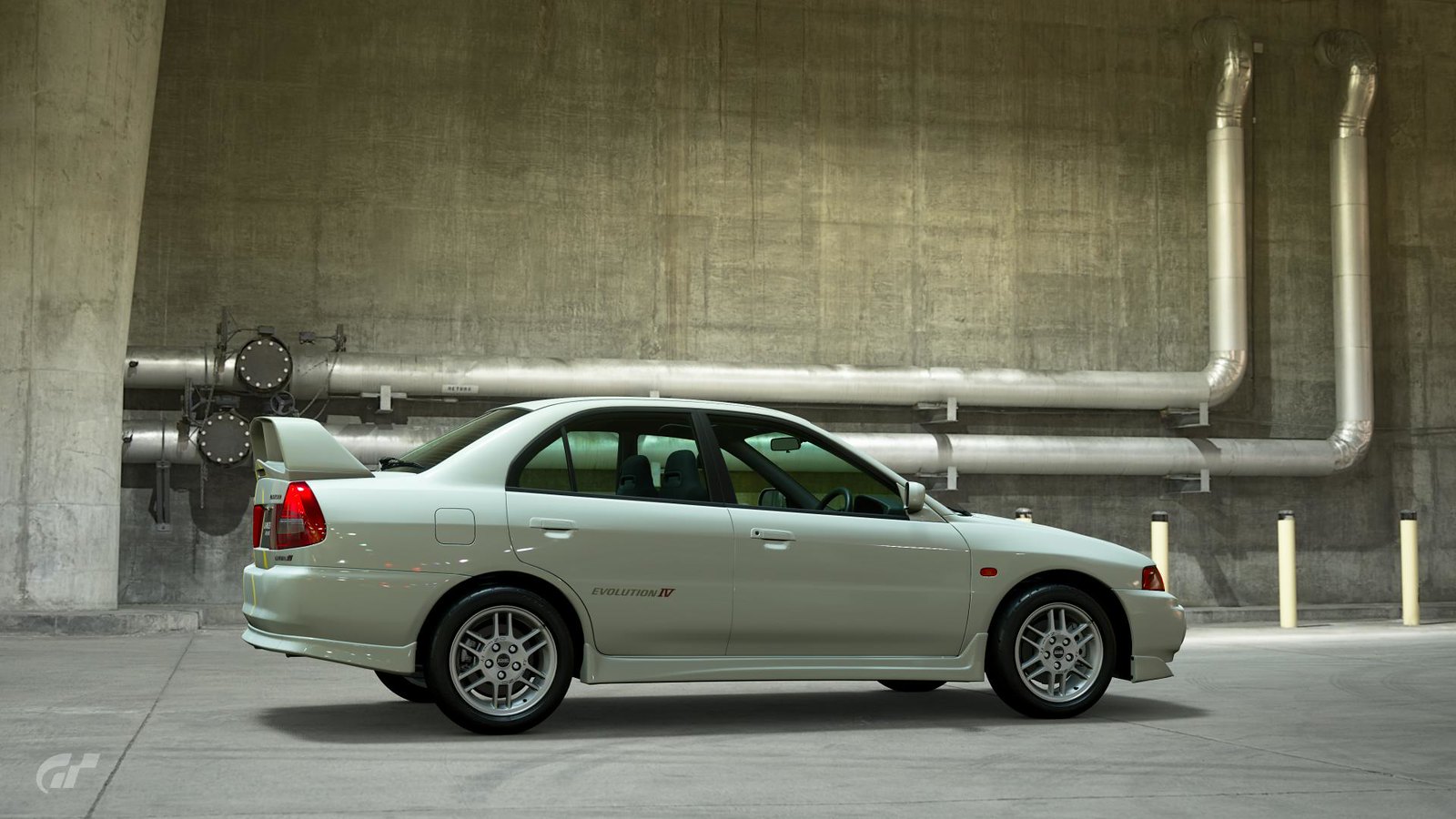
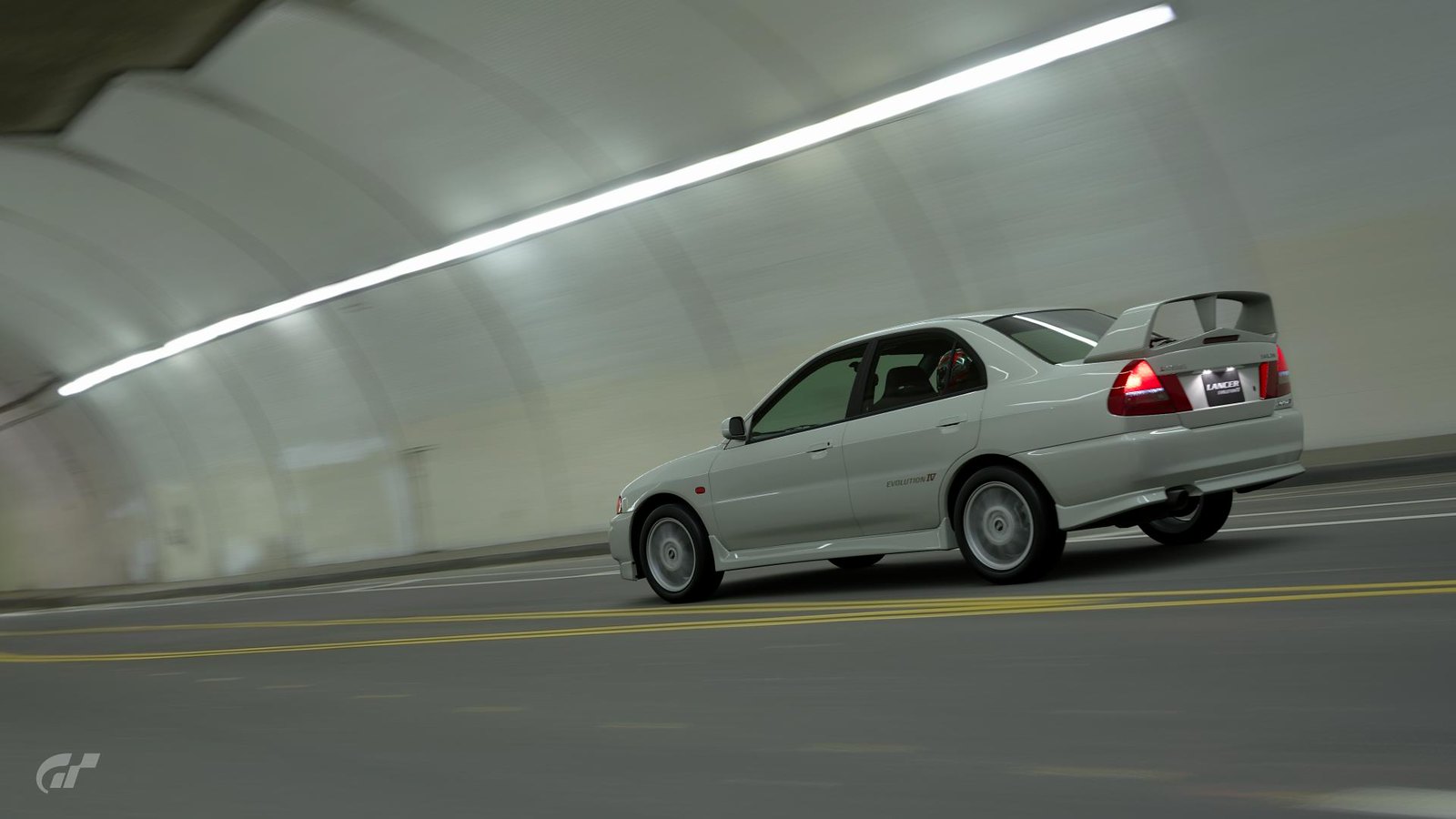
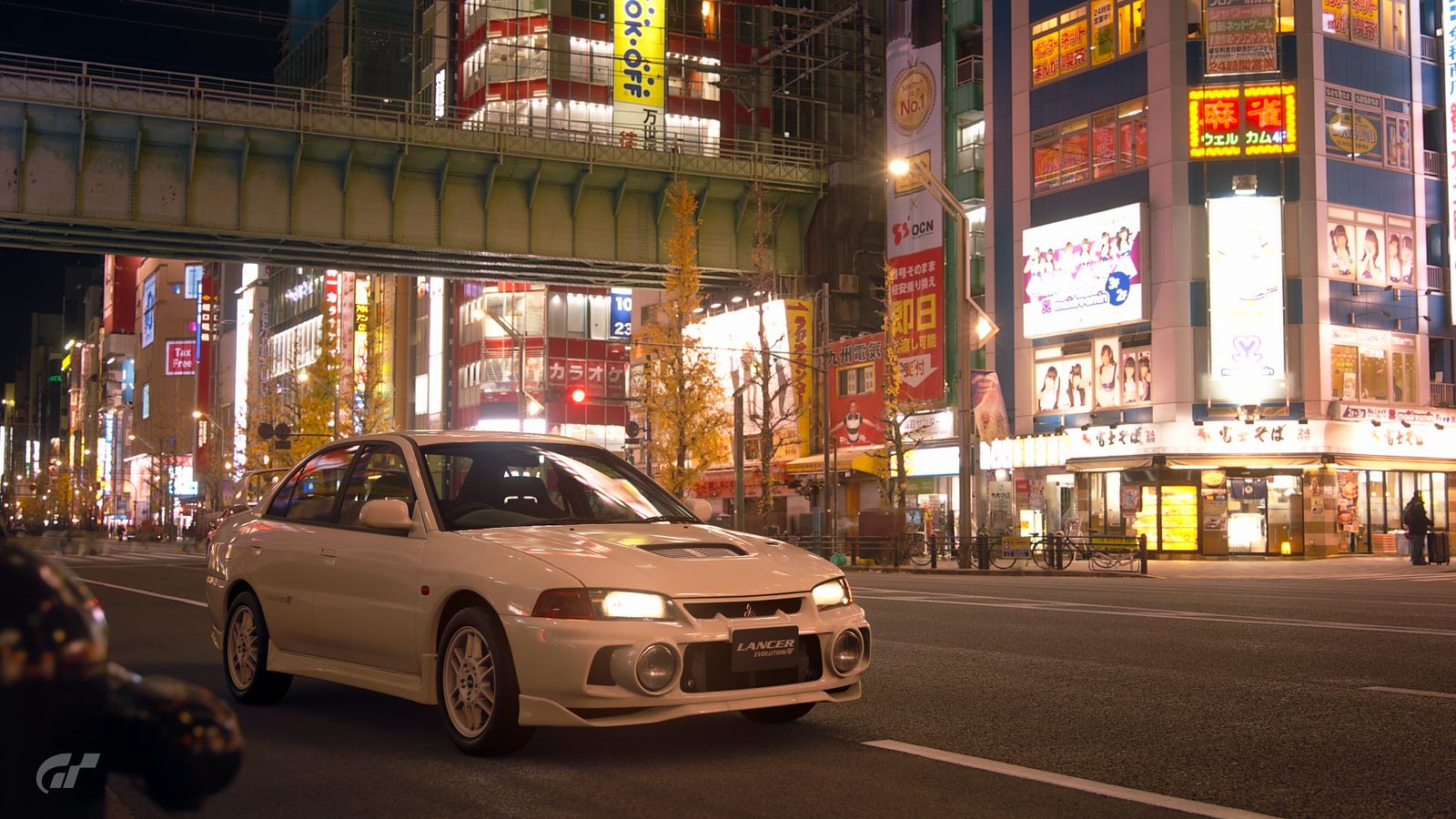
The CN9A-spec Lancer Evolution IV marked the second era of the Lancer Evolution and it was based on what I refer to the Lancer "pizza" because of its pizza-shaped rear lamps. Launched in Japan since the summer of 1996, the Evo IV's 4G63 engine has been rotated around 180 degrees for space measures at the engine bay and the power output compared to the previous I to III has been bumped to 276HP of power and 260.3ft-lb of torque. This is the first Evo to come with an Active Yaw Control that replaced the previous model's mechanical limited slip differential. While this car of that era was followed by V and VI which are better looking and better to drive compared to this, rest assured that the IV is something to get used to especially if you are a member of a tough team of Evo drivers I'm familiar with.
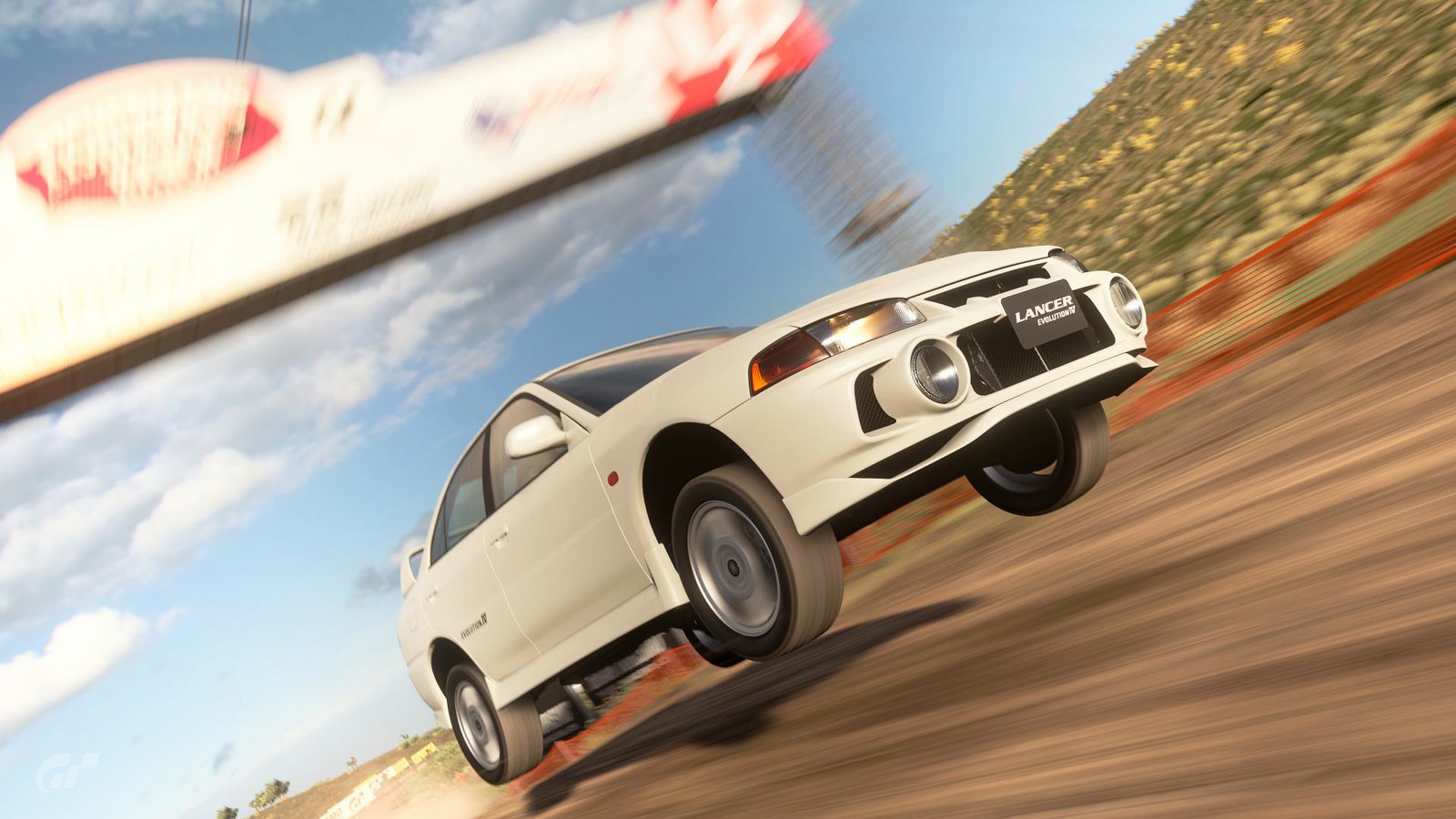
I am very familiar about the Evo IV ever since the first Gran Turismo game but here on GT SPORT, it's a different experience behind the wheel because on the track, it feels somewhat grippy on the corners and tend to understeer. On dirt tracks, its presence thanks to its involvement in rallying really shows its true colors because during Mitsubishi's time at the WRC, they became a force to be reckoned with. Ah, how we missed the good old days, but this is no time to get sentimental because being a representative of the mid-90's JDM sportscars, it's time to see how much of a car the Evo IV is and with that, I went to Australia.
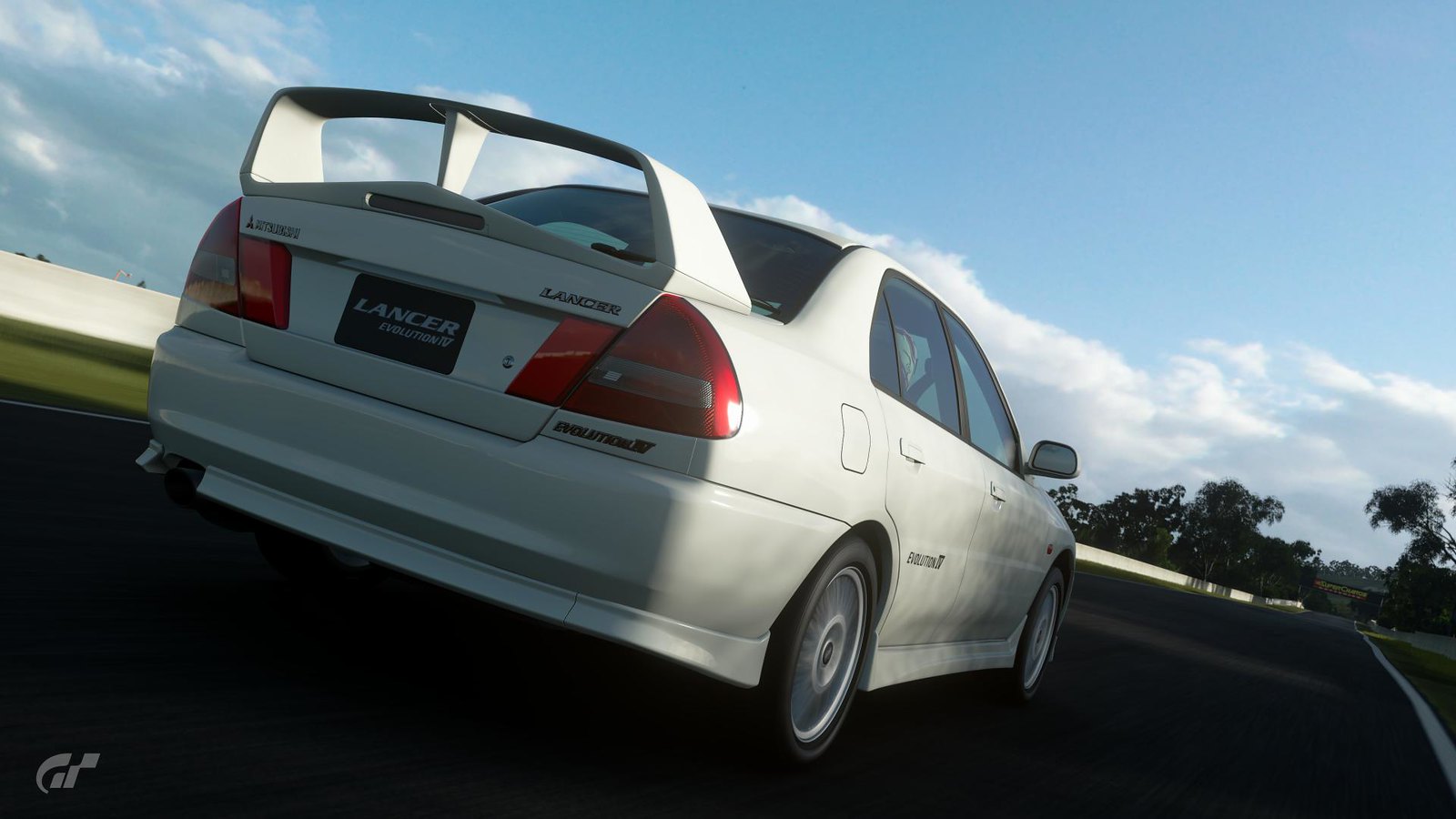
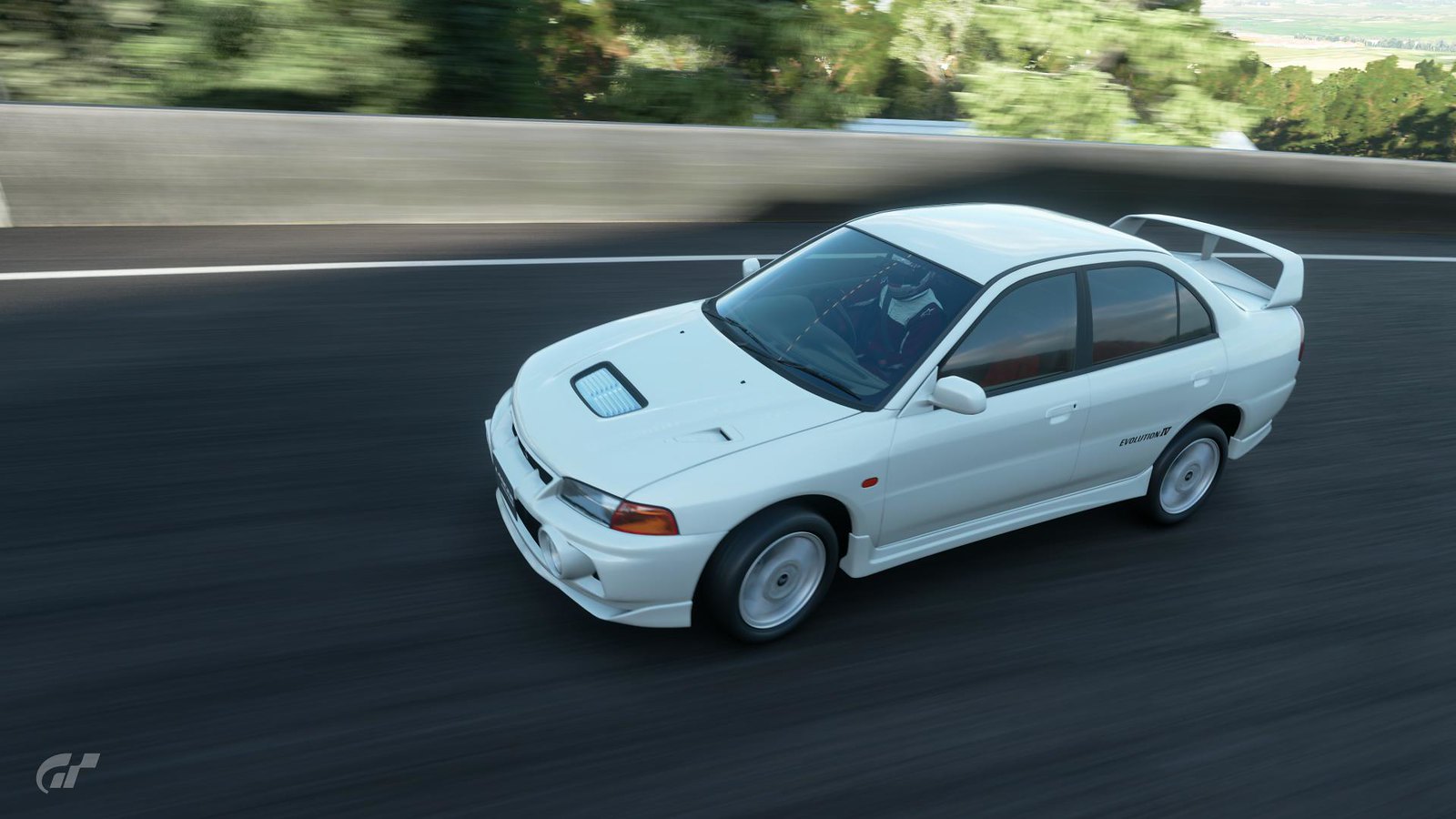
Specifically, I went to Mount Panorama, Bathurst, and find out. Having said that, the Lancer Evo IV is too grippy for a four-door sportscar and even with the traction control off, it doesn't feel like its off and as a result, some dreary understeer. I can really feel the understeering issues with the Evo IV and because being mated with a 5-speed manual, it's not quite good on the acceleration. Despite its faults, the Evo IV considers its faults as its challenge to push itself to the very foundation it set foot and this is how I delivered with this car.
Although imperfect, I had a lot of fun getting to know more about the Evo IV in a more realistic approach while trying to fight its grip at some technical turns at Bathurst. Like I was saying, the grip is considered to be a key challenge for this 4WD icon because with all that understeering going on at track use, it takes some fighting to get it cornered right but when I took it on the dirt track, it's fine. Is it because the Lancer Evo was made for rallying use rather than track use? It's hard to explain but either way, this Evo is worth a kick to drive.
Having finished my little one-on-one with the Evo IV, I made a little surprise in store for this car...
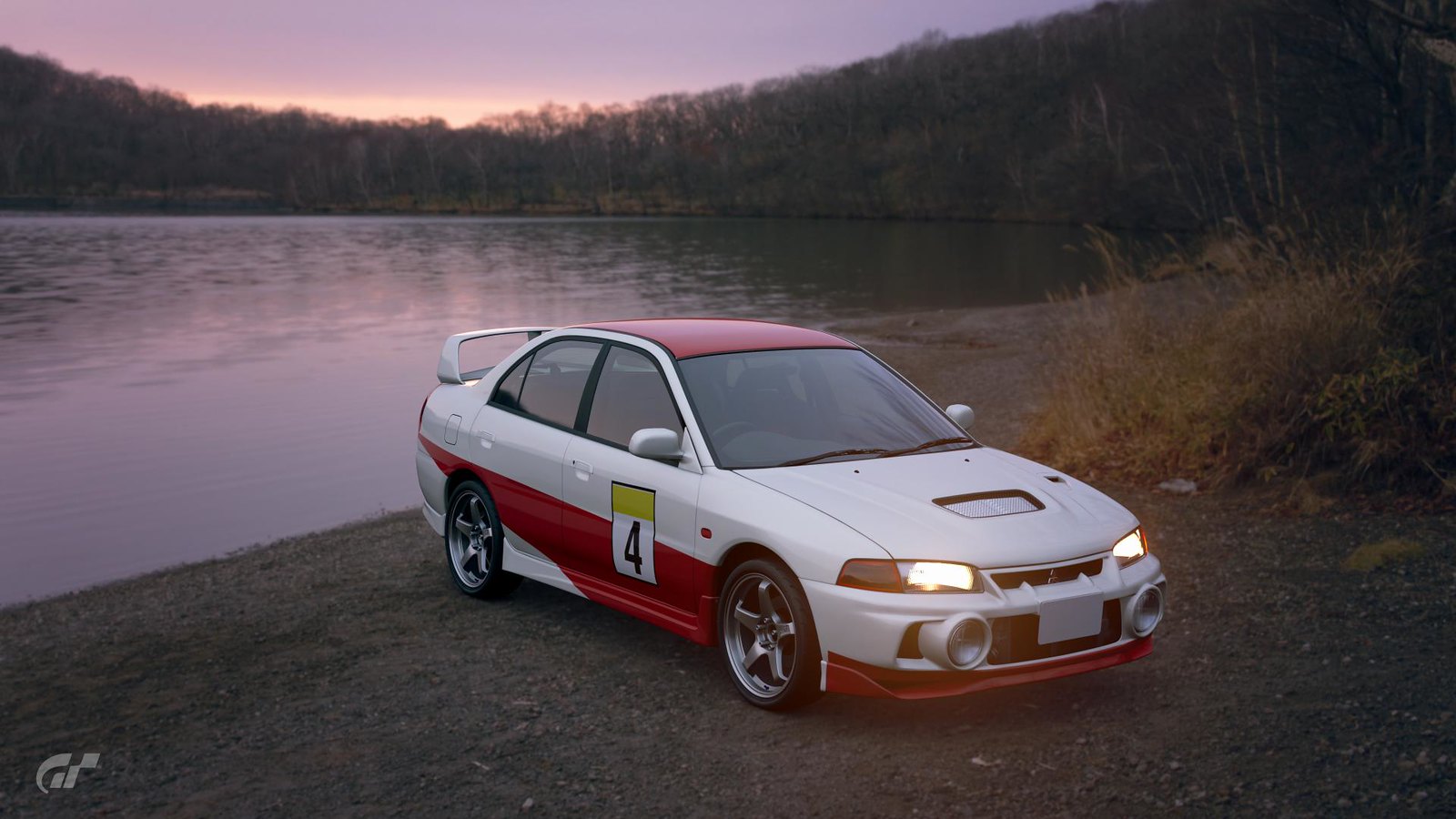
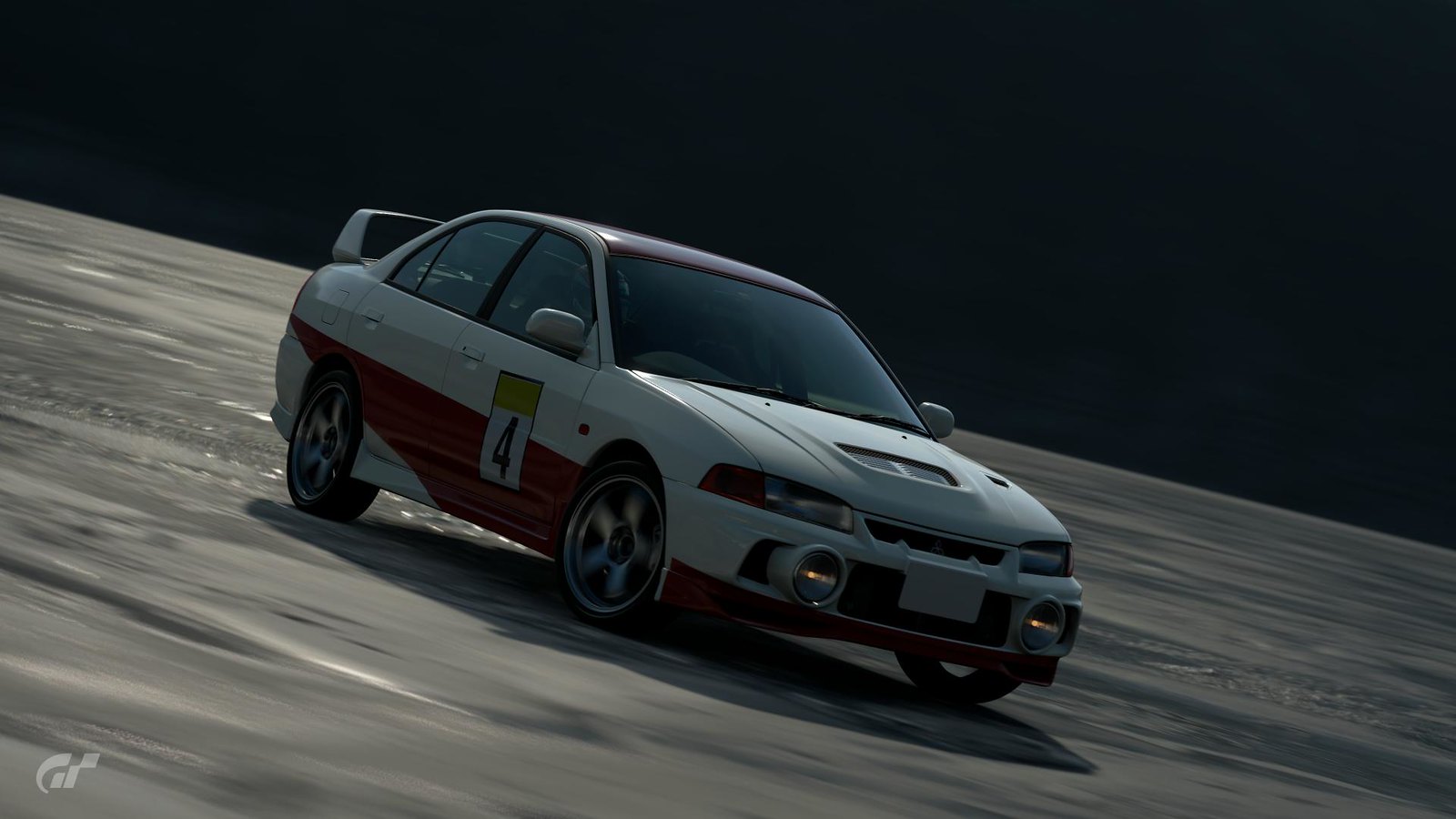
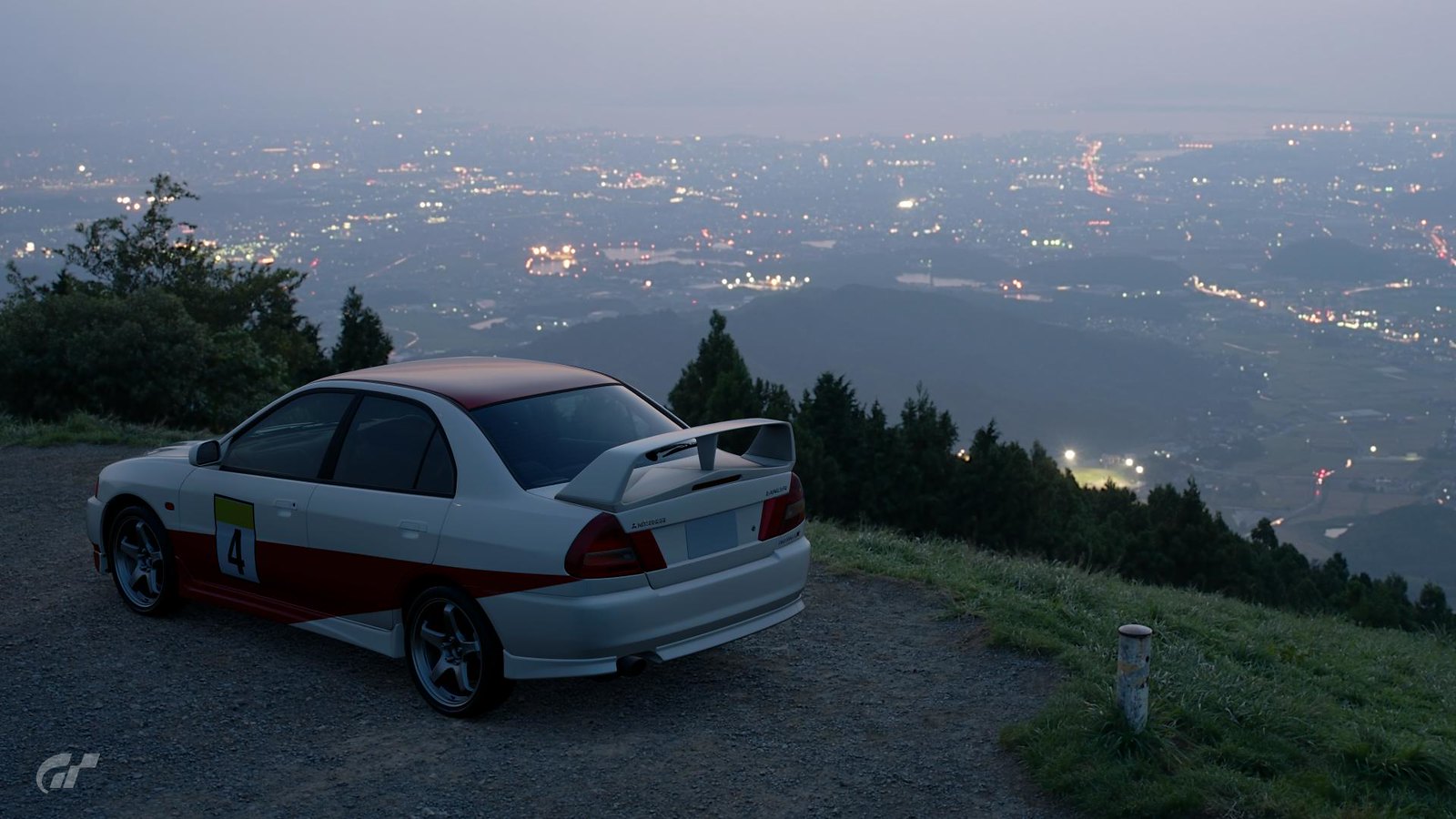

Remember this rival car? It sure brings us memories...



























